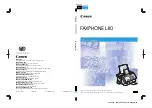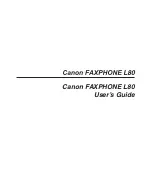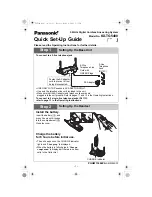
SPIKE SYSTEM AND NODE GUIDE
9
AEROSMITH LE / PREMIUM MANUAL 500-55I6-01
© 2016 Rag Doll Merchandising, Inc. Under License to Epic Rights.
2. SPIKE SYSTEM AND NODE GUIDE
2.1 SPIKE SYSTEM OVERVIEW
The SPIKE Pinball system is a rugged, distributed, and em-
bedded platform custom-designed for the rigors of the pinball
machine environment. SPIKE takes advantage of modern tech-
nologies to deliver an immersive pinball experience that supports
modern features, reduces cabling, and increases serviceability
and reliability.
A Stern Pinball machine based on the SPIKE system will have at
least two nodes networked together with the SPIKE node bus,
a custom industrial pinball control bus that is designed around
industry standards and optimized for the pinball environment.
The primary CPU node is networked to one or more input/output
nodes over standard Category 5 UTP (unshielded twisted pair)
ethernet cabling.
There are five primary types of nodes that are found in the game.
•
CPU node (Node 0) - The primary node that controls other
nodes in the system. Contains the primary game software
for the system and provides SPIKE node bus power for other
nodes.
•
Cabinet 48V node (Node 1) - Specialized node with specific
inputs and outputs for coin doors, tilt mechanisms, and other
bottom-cabinet devices.
•
48V playfield node - Controls high power devices such
as coils and flashers, and also supports a few switch and
low-power outputs. Powered by the system 48V power sup-
ply.
•
Light and switch node - High-density switch and low-power
LED outputs, bus-powered from the node bus. These boards
contain as many 32 switch inputs and light outputs.
•
Node extensions - These sub-nodes add additional low-pow-
er input and outputs to a specific Power or I/O node and are
connected with simple serial bus.
2.2 NODE BUS CABLING
The SPIKE node bus utilizes standard Ethernet-style RJ45 8-pin
modular jacks, and off-the-shelf Category 5e or better ethernet
cabling. The node bus is electrically different from Ethernet and
does not utilize Ethernet or TCP/IP protocols or signaling stan-
dards. SPIKE nodes are not compatible with standard computer
networking equipment.
CAUTION: Plugging a SPIKE Node or CPU board into a standard
Ethernet port may damage one or both devices and void your
warranty.
2.3 SYSTEM POWER
The SPIKE System is powered from an 48V DC power supply
bus. Each SPIKE node converts this voltage to lower voltages
required by the node and its specific components. A SPIKE 48V
node typically controls high-power outputs such as game coil
mechanisms and high-brightness LEDs. These powered nodes
are supplied directly with 48V system power. SPIKE standard I/O
nodes are low-power nodes that read switch inputs and output to
standard-brightness LEDs. Standard I/O nodes use the node bus
power, which is supplied by the main CPU node over the node
bus modular jack connectors.
2.4 SPIKE NODE ADDRESSES
Each SPIKE node has a unique address ranging from 0 to 15. Not
all addresses are used in all games. Nodes can be of the same
part number, so the address is specified on the DIP switches on
each node. When replacing a node, be certain that the correct
address is set. Nodes can have 3-position and 4-position DIP
switches. Refer to the appropriate table to set the address for
each type of Node. The correct address for a node can be found
in the SPIKE node reference section of the manual or in the game
diagnostic software. Address 0 is reserved for the backbox CPU
node, where the game software resides. Address 1 is reserved for
the cabinet node, located inside the coin door. These two nodes
do not have DIP switches as their address is not configurable.
Address
1
2
3
8
OFF
OFF
OFF
9
OFF
OFF
ON
10
OFF
ON
OFF
11
OFF
ON
ON
12
ON
OFF
OFF
13
ON
OFF
ON
14
ON
ON
OFF
15
ON
ON
ON
SPIKE node addresses for nodes with 3-position DIP switches.
Addresses 0-7 are not used by SPIKE nodes with 3-position DIP
switches.
Address 1
2
3
4
8
OFF
OFF
OFF
OFF
9
OFF
OFF
ON
OFF
10
OFF
ON
OFF
OFF
11
OFF
ON
ON
OFF
12
ON
OFF
OFF
OFF
13
ON
OFF
ON
OFF
14
ON
ON
OFF
OFF
15
ON
ON
ON
OFF
SPIKE node addresses for nodes with 4-position DIP switches.
Addresses 0-7 are reserved for fixed-function nodes and do not
require configuration.










































